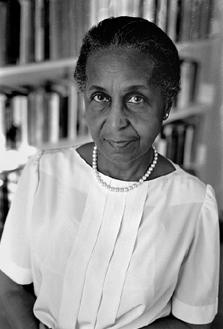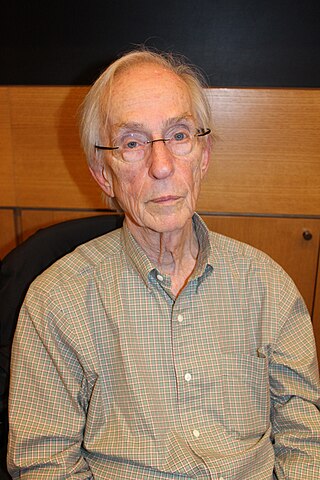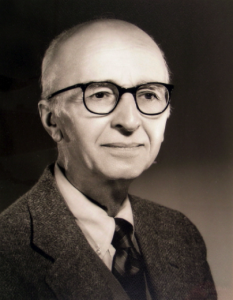
Eileen Jackson Southern was an American musicologist, researcher, author, and teacher. Southern's research focused on black American musical styles, musicians, and composers; she also published on early music.

Howard Saul Becker was an American sociologist who taught at Northwestern University. Becker made contributions to the sociology of deviance, sociology of art, and sociology of music. Becker also wrote extensively on sociological writing styles and methodologies. Becker's 1963 book Outsiders provided the foundations for labeling theory. Becker was often called a symbolic interactionist or social constructionist, although he did not align himself with either method. A graduate of the University of Chicago, Becker was considered part of the second Chicago School of Sociology, which also includes Erving Goffman and Anselm Strauss.
Terry Smith is an Australian art historian, art critic and artist who currently lives and works in Pittsburgh, New York and Sydney.
Jane Marcus (1938–2015) was a pioneering feminist literary scholar, specializing in women writers of the Modernist era, but especially in the social and political context of their writings. Focusing on Virginia Woolf, Rebecca West, and Nancy Cunard, among many others, she devised groundbreaking analyses of Woolf's writings, upending a generation of criticism that ignored feminist, pacifist, and socialist themes in much of Woolf's work and critique of imperialism and bourgeois society. Marcus's understanding of Woolf's place within the larger context of English literature has become prevailing wisdom today in the fields affected by her theorization and research, despite the controversial nature of her positions when they were originally formulated and how much opposition she garnered from earlier scholars and critics.
Svetlana Leontief Alpers is an American art historian, also a professor, writer and critic. Her specialty is Dutch Golden Age painting, a field she revolutionized with her 1984 book The Art of Describing. She has also written on Tiepolo, Rubens, Bruegel, and Velázquez, among others.

Eliot Sandler Deutsch was a philosopher, teacher, and writer. He made important contributions to the understanding and appreciation of Eastern philosophies in the West through his many works on comparative philosophy and aesthetics. He was a Professor Emeritus of Philosophy at the University of Hawaii.
Jane Taylor is a South African writer, playwright and academic. She currently holds the Andrew W. Mellon Chair of Aesthetic Theory and Material Performance at the Centre for Humanities Research at the University of the Western Cape in South Africa. She is the director of the Laboratory of Kinetic Objects (LoKO), a Centre for the theoretical and material exploration of the Subject/Object continuum. The Centre engages in performance arts as well as research and intellectual enquiry into the human and technological interface, Artificial Intelligence (AI) Intelligent Amplification (IA). Her recent performance/lecture “Ne’er So Much the Ape” [which takes its title from an old English adage, ‘ne’er so much the Ape as when he wears the doctor’s cape’] explores the articulation of primate research, race theory, AI, and performance theory.
Barbara Maria Stafford is an art historian whose research focuses on the developments in imaging arts, optical sciences, and performance technologies since the Enlightenment.
Samuel M. Weber is the Avalon Foundation Professor of Humanities at Northwestern University, as well as a professor at the European Graduate School in Saas-Fee, Switzerland.
Martha P. Tedeschi is an American art historian and curator. Tedeschi currently serves as the Elizabeth and John Moors Cabot Director of the Harvard Art Museums. She is a scholar of nineteenth-century American and British prints and drawings, especially works by artists such as Winslow Homer, John Marin, and James McNeill Whistler.
Wanda M. Corn is an American art and cultural historian.
Pamela H. Smith is an American historian of science specializing in attitudes to nature in early modern Europe (1350-1700), with particular attention to craft knowledge and the role of craftspeople in the Scientific Revolution. She is the Seth Low Professor of History, founding director of the Making and Knowing Project, founding director of the Center for Science and Society, and chair of the Presidential Scholars in Society and Neuroscience, all at Columbia University. Smith is serving a two-year term (2016-2018) as president of the Renaissance Society of America.
Christopher S. Wood is professor in the Department of German at New York University; he is best known as an art historian.

Jean Victor Edmond Paul Marie Bony was a French medieval architectural historian specialising in Gothic architecture. He was Slade Professor of Fine Art at the University of Cambridge from 1958 to 1961, Fellow of St John's College, Cambridge, and Professor of Art at the University of California at Berkeley, from 1962 to 1980.
Margaret Cool Root is Professor of Near Eastern Art and Archaeology at the University of Michigan. She is an expert on the Achaemenid empire of ancient Persia and its interactions with Greece, and has published widely on Near Eastern material culture.
Marjorie Elizabeth Cropper is a British-born art historian with a special interest in Italian and French Renaissance and Baroque art and art literature. Dean of the National Gallery of Art’s Center for Advanced Study in the Visual Arts (CASVA) since December 2000, she previously held positions as Professor of Art History at Johns Hopkins University and director of the university’s Charles S. Singleton Center for Italian Studies at Villa Spelman in Florence.
Carolyn Marino Malone is an American medievalist and academic. She is professor of art history and history at USC Dornsife College, Los Angeles, California, with a PhD in Art History and Medieval Studies (1973) from the University of California, Berkeley. Her research interests are English and French Romanesque and Gothic architecture and sculpture. She has published books on sculptural finds at Canterbury Cathedral, the abbey of St Bénigne in Dijon, the façade of Wells Cathedral, and monastic life in the Middle Ages. She served as Vice-President (1996-1997) and President (1999) of Art Historians of Southern California; Domestic Advisor to the Board of Directors of the International Center of Medieval Art (1984-1987); and was on the board of directors of the Medieval Association of the Pacific (1986-1989). She is a member of the Society of Architectural Historians.
Anne Goldgar is an American historian, author and academic, specializing in seventeenth and eighteenth century European cultural and social history, and of Francophone culture across Europe. She holds the inaugural Van Hunnick Chair in European History at the University of Southern California Dornsife. She was previously Professor of early modern history at King's College London, UK. In 2016/7 she was a Descartes Theme Group Fellow at the Netherlands Institute for Advanced Study in the Humanities and Social Sciences.
Anne Elizabeth Dunlop is a Canadian-born art historian. As of 2022 she is Herald Chair of Fine Art at the University of Melbourne.

Interior, after Dinner is an oil-on-canvas painting by French artist Claude Monet (1840–1926) created during the winter of 1868-1869, a productive time for the painter. He spent the winter in Étretat with his girlfriend Camille Doncieux and their newborn son.




